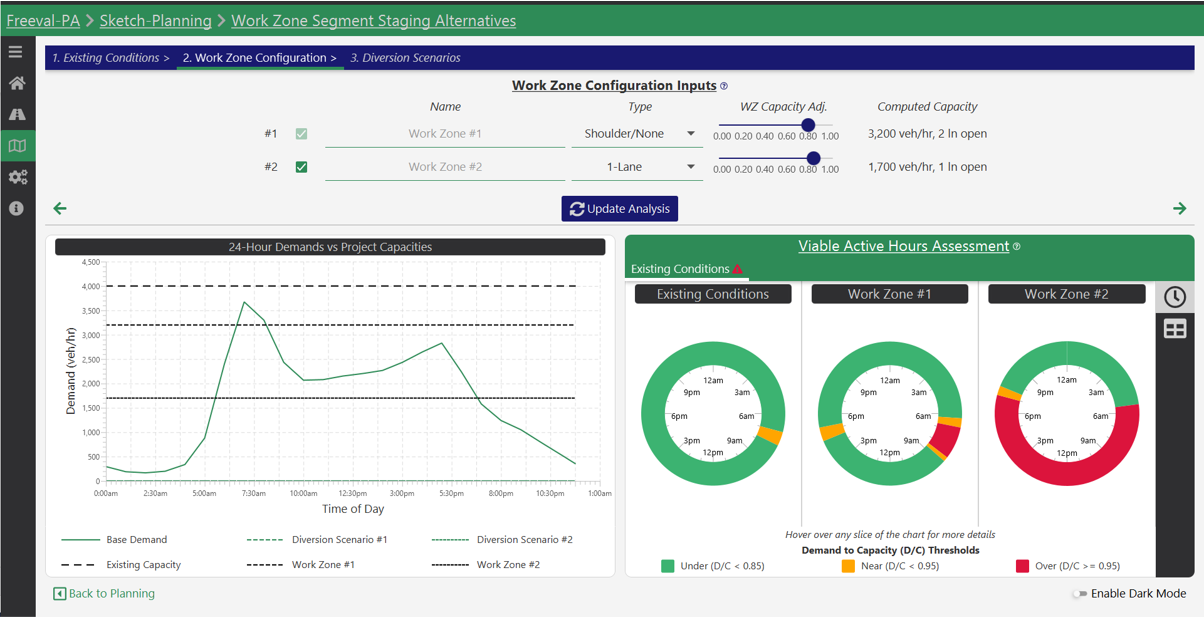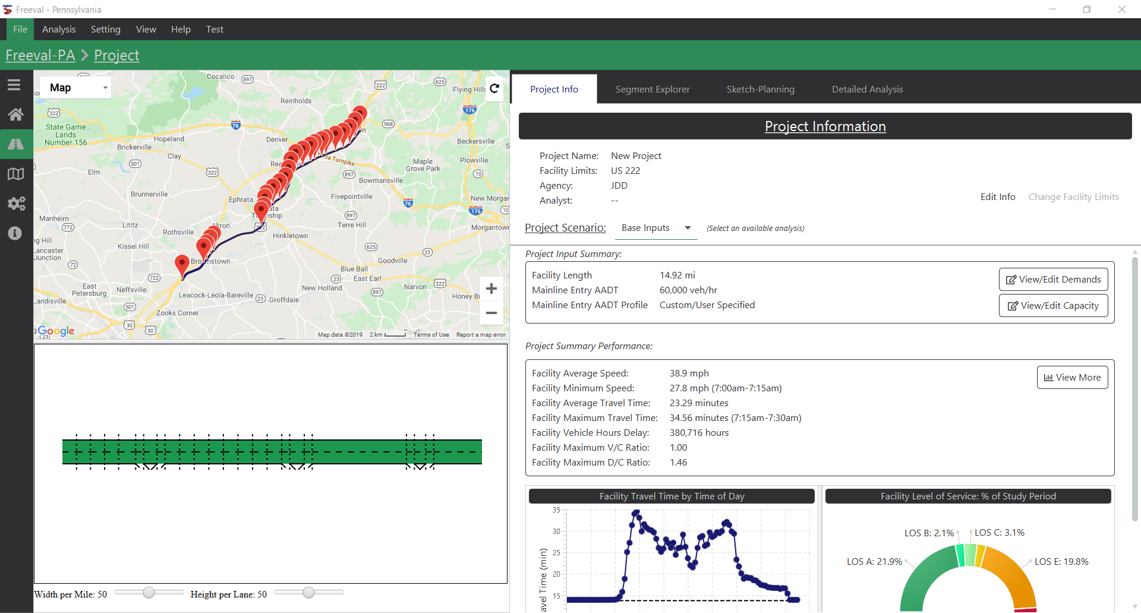Planning for efficient and effective work zones on Pennsylvania's roadways helps to minimize congestion and delays. FREeway EVALuation-Pennsylvania, or FREEVAL-PA, is a predictive work zone assessment tool for use by PennDOT employees and business partners. FREEVAL-PA is the Pennsylvania-specific version of the FREEVAL analysis software, created to analyze work zones' effect on traffic flow. It guides PennDOT's decision-making process for implementing lane closures, crossovers, or other traffic control methods and helps to minimize congestion and delays during construction or maintenance projects.
FREEVAL-PA supports the planning, prioritization, operations, and analysis of work zones on all roadways, including roadways with limited access. PennDOT and its partners can use the software for work zone staging changes, work zone delay and user cost analysis, lane reservation analysis, diversion sensitivity analysis, freeway alternatives analysis, and scenario planning. FREEVAL-PA can also be used to evaluate incident management and response strategies.

How Does It Work?
Roadway characteristics of every freeway segment in Pennsylvania, along with traffic volume and speed data, weather data, terrain data, and a computational engine powered by the Highway Capacity Manual, are programmed into FREEVAL-PA. The software provides planners and engineers the ability to quickly test the impacts of different work zone scenarios and quantify the effects of congestion over time. The software allows the user to create new analyses, open and review existing research, and test incident planning scenarios.
Summary of Work Zone Use Cases
- Comparing work zone scenarios – impacts of shoulder closure vs. lane closure vs. directional crossover
- Setting
temporal construction limits – comparing impacts of lane closure start times and end times
- Determining minimum lane requirements for work zone – scoping of design-build contracts
- Identifying diversion targets – evaluating impacts of diversion on operations
- Informing lane reservation systems – showing allowable work hours by segment and by work type
What Are The Benefits?
Implementing a universal FREEVAL-PA computational tool will assist PennDOT and its partners in evaluating freeway performance and reliability across Pennsylvania. Since the software is pre-populated with data, high-level screenings of freeway segments that once took hours can now be done in seconds, while more detailed analyses, which could take days or weeks, can now be done in a matter of hours.
Other planning applications for FREEVAL-PA include understanding time delays if a road is closed due to a crash. FREEVAL-PA also supports future applications such as a lane reservation system. PennDOT and its partners will be able to reserve lanes for work zones at optimal closure times, much like a restaurant's reservation system.

Innovation In Motion
The concept behind FREEVAL-PA began in the 1990s as an Excel spreadsheet at North Carolina State University. In 2015, FREEVAL moved to a Java-based platform, and was integrated into the computational engine of the Highway Capacity Manual (HCM) – the transportation industry’s guidebook for understanding capacity and operational impacts. With FREEVAL recognized nationally, PennDOT explored its use within Pennsylvania after the Federal Highway Administration (FHWA) performed an Independent Oversight Program (IOP) review as to how the Department evaluates critical work zone projects.
Working with a consultant, PennDOT tailored the tool to the state's expressway network specifics, launching FREEVAL-PA. Moving forward, PennDOT will require certain lane restrictions within PennDOT’s core roadway network to be analyzed using FREEVAL-PA.
More Information